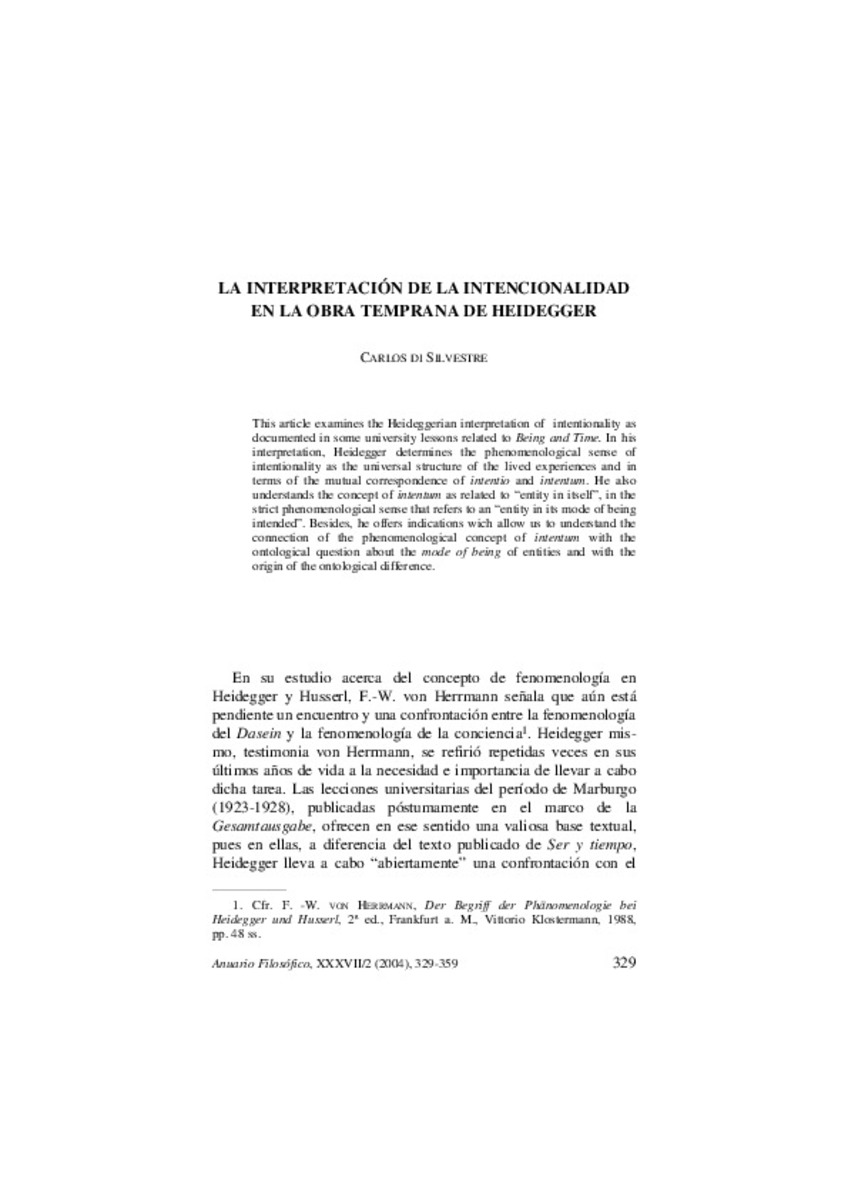Full metadata record
| DC Field | Value | Language |
|---|---|---|
| dc.creator | Silvestre, C. (Carlos) di | |
| dc.date.accessioned | 2009-10-21T10:08:31Z | - |
| dc.date.available | 2009-10-21T10:08:31Z | - |
| dc.date.issued | 2004 | - |
| dc.identifier.citation | Anuario Filosófico, 2004 (37), 329 - 359 | es_ES |
| dc.identifier.uri | https://hdl.handle.net/10171/4531 | - |
| dc.description.abstract | This article examines the Heideggerian interpretation of intentionality as documented in some university lessons related to Being and Time. In his interpretation, Heidegger determines the phenomenological sense of intentionality as the universal structure of the lived experiences and in terms of the mutual correspondence of intentio and intentum. He also understands the concept of intentum as related to “entity in itself”, in the strict phenomenological sense that refers to an “entity in its mode of being intended”. Besides, he offers indications wich allow us to understand the connection of the phenomenological concept of intentum with the ontological question about the mode of being of entities and with the origin of the ontological difference. | es_ES |
| dc.language.iso | spa | es_ES |
| dc.rights | info:eu-repo/semantics/openAccess | es_ES |
| dc.subject | intencionalidad | es_ES |
| dc.subject | Heidegger, Martin | es_ES |
| dc.subject | ser | es_ES |
| dc.title | La interpretación de la intencionalidad en la obra temprana de Heidegger | es_ES |
| dc.type | info:eu-repo/semantics/article | es_ES |
| dc.identifier.doi | 10.15581/009.37.29385 | es_ES |
Files in This Item:
Statistics and impact
Items in Dadun are protected by copyright, with all rights reserved, unless otherwise indicated.






